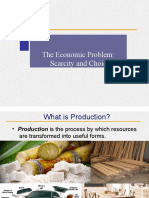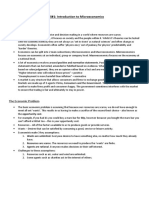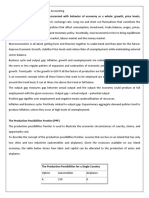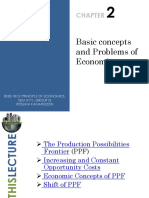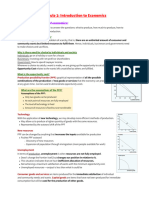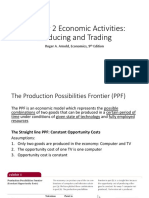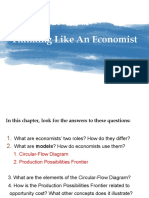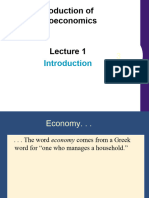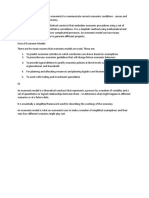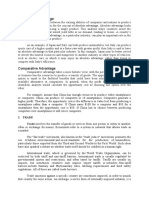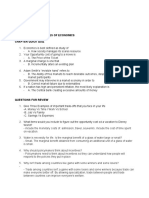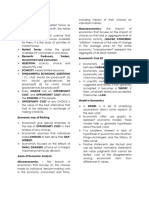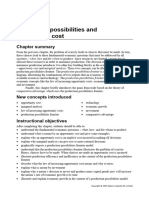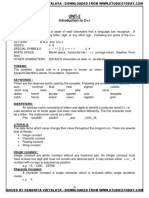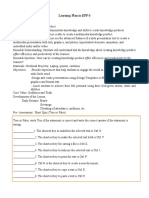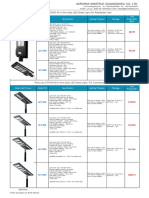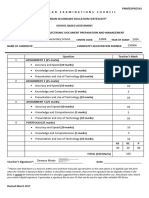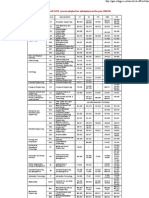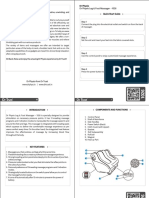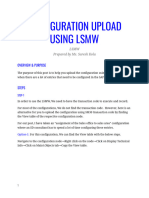0% found this document useful (0 votes)
56 views6 pagesChapter 2 Notes
- The production possibilities frontier (PPF) shows the maximum combinations of two products that can be produced with available resources, illustrating the trade-offs from scarcity.
- Points on the PPF are technically efficient, while points inside are inefficient and points outside are unattainable.
- The PPF is typically bowed out rather than a straight line, demonstrating that the opportunity cost of an activity increases as more resources are devoted to it.
Uploaded by
Beatriz CanchilaCopyright
© © All Rights Reserved
We take content rights seriously. If you suspect this is your content, claim it here.
Available Formats
Download as DOCX, PDF, TXT or read online on Scribd
0% found this document useful (0 votes)
56 views6 pagesChapter 2 Notes
- The production possibilities frontier (PPF) shows the maximum combinations of two products that can be produced with available resources, illustrating the trade-offs from scarcity.
- Points on the PPF are technically efficient, while points inside are inefficient and points outside are unattainable.
- The PPF is typically bowed out rather than a straight line, demonstrating that the opportunity cost of an activity increases as more resources are devoted to it.
Uploaded by
Beatriz CanchilaCopyright
© © All Rights Reserved
We take content rights seriously. If you suspect this is your content, claim it here.
Available Formats
Download as DOCX, PDF, TXT or read online on Scribd
/ 6







